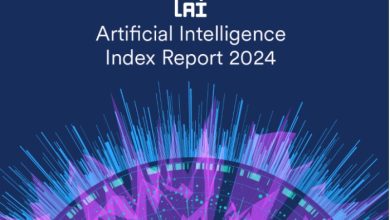CONNECTING THE UNCONNECTED: THE INTERNET OF EVERYTHING

The growth of internet connectivity has been exponential. Cisco Systems estimates that there were about 200 million things connected to the internet in 2000. By 2013, driven by advances in mobile technology and the “bring your own device” (BYOD) trend, among others, this number had increased to 10 billion as the world entered the age of the “internet of things” (IoT). However, as it’s estimated there are approximately 200 connectable things per person in the world today, these 10 billion things still represent less than 1% of the total number of things worldwide – about 1.5 trillion. For all these reasons, the next wave of dramatic internet growth will come through the confluence of people, process, data, and things — what is being called the “internet of everything” (IoE)

Why IoE?
IoE is further being driven by several factors. First, powerful technology trends including the dramatic increase in processing power, storage, and bandwidth at ever-lower costs; the rapid growth of cloud, social media, and mobile computing; the ability to analyze “big data” and turn it into actionable information; and an improved ability to combine technologies (both hardware and software) in more powerful ways make possible to realize more value from connectedness. Second, barriers to connectedness continue to drop. For example, IPv6 overcomes the IPv4 limit by allowing for more people, processes, data, and things to be connected to the internet. It’s been said that, IPv6 creates enough address capacity for every star in the known universe to have 4.8 trillion addresses! Third, form factors continue to shrink. Today, a computer the size of a grain of salt(1x1x1mm) includes a solar cell, thin-film battery, memory, pressure sensor, and wireless radio and antenna. Cameras, also the size of a grain of salt, now have 250 x 250-pixel resolution. And, sensors the size of a speck of dust (0.05 x 0.005 mm) detect and communicate temperature, pressure, and movement. These developments are important because, in the future, things connected to the internet may be hard for the human eye to even see. Finally, IoE reflects the reality that business value creation has shifted to the power of connections and, more specifically, to the ability to create intelligence from those connections. Companies can no longer rely solely on internal core competencies and the knowledge of their employees; instead, they need to capture intelligence faster, from many external sources. This will occur through connections enabled by IoE
$14.4 trillion of value at stake
“Value at stake”, according to Cisco, is the potential bottom-line value (higher revenues and lower costs) that can be created or will “migrate” among companies and industries based on their ability to harness IoE. Cisco predicts that the IoE value at stake will be $14.4 trillion for companies and industries worldwide in the next decade. More specifically, over the next 10 years, value at stake represents an opportunity to increase global corporate profits by about 21 percent. In other words, between 2013 and 2022, $14.4 trillion of value (net profit) will be “up for grabs” for enterprises. IoE will both create new value and redistribute (migrate) value based on how well companies and organizations take advantage of the opportunities presented by IoE. Those that harness IoE best will reap this value in either of two ways – by capturing new value created from technology innovation or by gaining competitive advantage and grabbing market share against other companies less able to transform and capitalize on the IoE market transition.
Cisco’s analysis shows that most of the potential value at stake (66 percent, or $9.5 trillion) comes from transformation based on industry-specific use cases such as smart grid and smart buildings. The other 34 percent, or $4.9 trillion, is produced by cross-industry use cases such as the future of work (telecommuting) and travel avoidance. It is important to note that Cisco’s analysis focuses on the amount of private sector value at stake and does not include potential value at stake from the consumer or public sectors, or from societal benefits.

Growth drivers
Cisco identifies five main drivers of the $14.4 trillion IoE value at stake – asset utilization ($2.5 trillion); employee productivity ($2.5 trillion); supply chain and logistics ($2.7 trillion); customer experience ($3.7 trillion); and innovation, including reducing time to market ($3.0 trillion) The fact that each of these areas has roughly the same amount of value at stake suggests that firms must examine how IoE can impact every aspect of their business processes including both cost-cutting and revenue-raising activities. In addition, to benefit from IoE, firms must combine technology-enabled security capabilities (both logical and physical) with policies and processes designed to protect the privacy of company and customer information. IoE’s growth potential in the private sector over the next decade will rely heavily upon the success of companies’ security and privacy efforts.
Which connections matter most?
By definition, IoE includes three types of connections- machine-to-machine (M2M), person-to-machine (P2M), and person-to-person (P2P). Cisco estimates that P2M and P2P connections combined will constitute 55 percent of the total IoE value at stake by 2022 while M2M connections will make up the remaining 45 percent. It is important to note that while M2M connections are fast becoming a sizable source of value, the end result of these connections is ultimately to benefit people. The bottom line is that the IoE economy is about enabling people to be more productive and effective, make better decisions, and enjoy a better quality of life. Connected healthcare and patient monitoring provide a great example of this. By enriching the connections between medical devices and both patients and doctors (M2P), and among patients and doctors themselves (P2P), better hospital-level care can be provided at patients’ homes. This improves quality of life, increases positive medical outcomes, and reduces costs for both healthcare providers and patients





